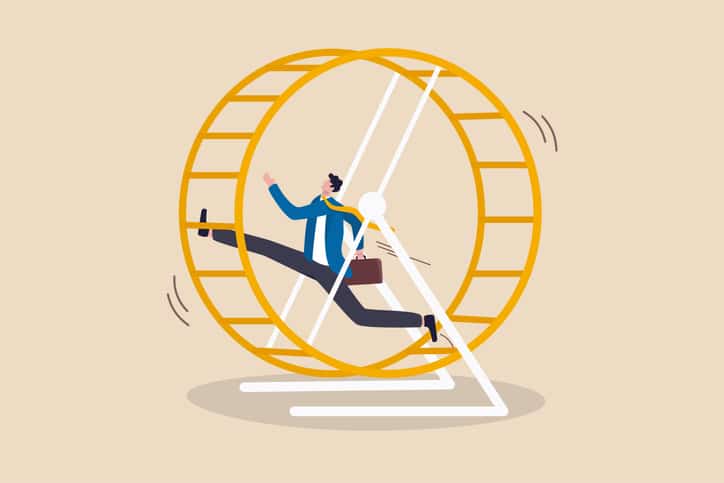
The biggest labor challenges facing today’s employers all lead back to the same place.
In the dynamic landscape of modern employment, an undeniable truth has emerged: the pivotal labor challenges plaguing today’s organizations all trace back to a single, pervasive source.
Over the past two years, employers have found themselves grappling with a series of labor crises that have strained resources, sapped energy, and demanded attention. From the seismic shift of The Great Resignation to the disheartening echoes of The Great Regret, and the disruptive phenomenon of Quiet Quitting, one underlying culprit has remained steadfast—employee burnout.
The Great Resignation: A New Hope
During The Great Resignation, a staggering 71.6 million people parted ways with their jobs, driven by a multifaceted spectrum of motivations. Notably, the specter of employee burnout loomed large, emerging as a prominent force behind this exodus.
An illuminating survey by Limeade, a leading software company, unveiled that 40% of American workers pointed to burnout as their primary reason for bidding farewell to their roles.
Furthermore, a revealing study from the Pew Research Center highlighted that an alarming 39% of workers made the decision to leave due to the oppressive burden of excessive working hours.
Flex Jobs, in another survey, underscored the resounding demand for work-life balance, with higher pay taking a backseat in the pursuit of overall well-being. These trends painted a vivid picture of a workforce yearning for respite from relentless stress while aligning with a societal shift toward valuing quality of life over relentless toil.
The Great Regret: Meet The New Boss, Same as The Old Boss
The subsequent chapter, The Great Regret, dawned upon the heels of The Great Resignation, revealing an unforeseen twist. As millions who had left their jobs discovered, quitting was not an instant panacea for burnout woes. In fact, burnout stealthily persisted, with disillusioned employees finding themselves trapped in a cycle of overwork even in their new endeavors.
A telling Harris Poll illustrated that only 26% of job switchers intended to remain in their freshly acquired positions, with dissatisfaction stemming predominantly from a lack of work-life balance. While a concerning 36% of respondents cited diminished equilibrium between work and personal life as the primary cause of their discontent.
The disheartening truth was that, despite their initial leap, the specter of burnout had not abated, fueling The Great Regret.
Quiet Quitting: The Silent Backlash
In a surprising evolution, The Great Regret gave rise to Quiet Quitting, an unprecedented response to unmanageable burnout levels that became a cultural phenomenon.
The prospect of an impending recession and a tightening job market rendered employees apprehensive about leaving their roles, prompting a strategic withdrawal from active engagement.
As observed by a Gallup Poll found that half of the workforce turned to Quiet Quitting as a last-ditch mechanism to navigate persistent stress while preserving the semblance of personal life. However, this coping strategy proved detrimental to overall productivity, plunging employers into a state of turmoil.
New Year. Same Problems.
The ebb and flow of labor dynamics took an unexpected turn in mid-November 2022, as news of layoffs reverberated across industries, extinguishing the Quiet Quitting trend almost overnight. Job insecurity coerced employees to hold onto their positions tenaciously, sparking a short-lived surge in productivity.
Yet, as the specter of recession dissipates and the labor market regains momentum, a looming concern arises: Are we poised for The Great Resignation part deux? The enduring conditions that precipitated the original upheaval persist: burnout continues its relentless ascent, wages stagnate against inflation’s surge, and work-life balance yields to escalating productivity demands.
The Great Employee Burnout Crisis
A recurring permacrisis lies at the heart of our labor challenges, aptly named The Great Employee Burnout Crisis. To chart a path toward resolution, employers must recognize the pivotal role that burnout plays, acknowledging it as the central, persistent challenge.
As we stand at the precipice of change, the imperative is clear: both employers and employees must unite in a steadfast endeavor to overcome burnout’s grasp. The stakes are high, for neither party can afford to endure another year marked by burnout’s pervasive grip.
Attract, retain and engage talent with Best Upon Request’s employee concierge service. We save busy workers time and money. Employees who use our service report reduced stress and burnout, as well as enhanced focus. Offering a concierge program as a benefit gives employers a competitive edge in the labor market.




